
|
THE NEW WEARABLES

INVISIBLES

As wearable technology innovators and activity app developers such as Under Armour, Jawbone, Fitbit and Strava battle for market share, the next phase of activity and wellness monitoring is already being prototyped behind closed doors.
We will move from a time of wearables to a new evolution in body computing: the age of invisibles, when sensors are integrated into the body to give a continuous data stream and establish a complete picture of what’s going on with our health, rather than simply measuring and reporting on one aspect of it.
Invisibles will enable us to more accurately understand and diagnose disease and, in turn, to establish better methods of prevention and adherence to wellbeing programmes through lifestyle change. They’ll also return us to a more natural state, by removing the need to carry around intrusive devices.
| |


|

The next generation of trackers won’t be wearable; they’ll be inside the body |
|

|
PERSONAL TOUCH

DNA TESTING

The public now expects personalisation: this is a generation of consumers who aren’t satisfied if they’re not recognised, tracked, personally catered for.
For gyms, that doesn’t only mean personalised marketing (see beacon technology, p13). It also means personalised workouts, which will be taken to the next level by DNA testing – programmes tailored to the genetic make-up of people’s bodies.
This technology is already becoming mainstream – the 23andMe service is available from UK high street chemist Superdrug – so we aren’t far from a time when all workouts will be bespoke to individuals’ strengths, weaknesses, nutritional and recovery needs.
| |


|
| Photo: shutterstock.com |

Personalised workouts based on DNA will boost results for members |
|

|
PERSONALISATION

BEACON TECHNOLOGY

As beacon technology moves towards the mainstream, clubs can prepare for a new era of personalised communication with customers and prospects.
Beacons precisely know, within inches, where a consumer is – and this information combines with prior search histories and other user information to provide targeted recommendations, information and offers.
We’re likely to see some push-back from customers who feel their personal space is being invaded. However, Millennials in particular are open to being tracked geographically, provided immediate, personalised services are the result; Mintel research shows that 33 per cent of UK 16- to 34-year-olds would be willing to give brands they like access to their ‘real-time’ location to receive more relevant offers.
If operators can educate people about the benefits of beacon technology, and demonstrate the special benefits they would get from their use, the opportunity to improve customer relationships through higher levels of personalisation is significant.
| |


|
| Photo: shutterstock.com |

Businesses can use beacons to send tailored offers
to passers-by |
|

|
NIGHT OWLS

AROUND THE CLOCK FITNESS

Many low-cost clubs already open 24/7 – but with operators increasingly pressured to justify the overheads of their facilities, we’re likely to see more health clubs looking at ways of opening their doors throughout the night.
Whether that’s by retrofitting access and security technology for overnight operation, or employing one or two members of staff for a night shift, expect to see even the larger mid-market clubs considering this option – especially with virtual classes now going mainstream and allowing for a diverse exercise offering to be available around the clock.
| |
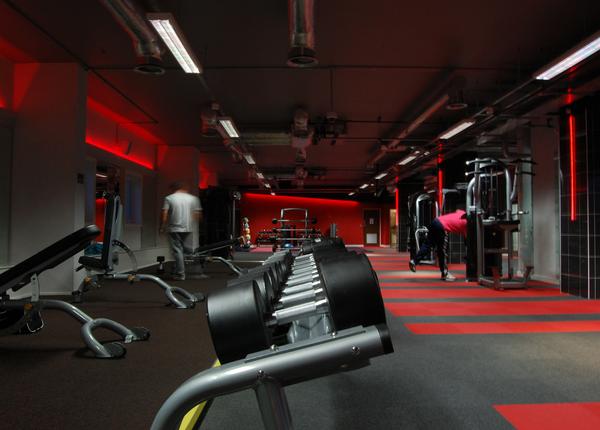

|

More and more gym operators will start to look at opening 24/7 |
|

|
ON A MISSION

BUSINESS WITH A PURPOSE

The right product, price – and even good service – is no longer enough to win customers’ loyalty. Expectations have raced onwards and upwards, with consumers looking for brands they feel proud to be associated with. Indeed, in GFK’s 2015 global survey of 28,000 consumers, 63 per cent said they only buy products and services that appeal to their beliefs, values or ideals.
Operators that are able to tap into this – setting out a mission and social purpose that members can identify with – will create a strong sense of community in their clubs, and with it drive improved loyalty and retention.
We hope 2016 will be the year when more fitness businesses follow the example of those curated by the Gymtopia project, an online library of companies whose altruistic efforts have successfully embedded them at – and in – the hearts of their local communities (see www.gymtopia.org).
| |


|

Clubs like My Sportlady aren’t just a gym, but
a community hub too |
|

|
LEARNING FROM NATURE

BIOMIMICRY

Increasingly architects and designers are turning to nature for inspiration – not just for the way buildings look, but also in the way they function. Biomimicry – the act of applying biological principles to design – hasn’t made its way into mainstream health clubs… yet. But we see it as the next step for a sector that’s already embracing sustainable and wellness-focused properties, and that’s already making steps in the right direction.
CLADmag – a sister magazine to Health Club Management – recently outlined a number of striking examples of biomimicry in the leisure industry, including thermo-metal cladding that ‘breathes’ like human skin to heat or cool a building, and super-efficient solar panels modelled on butterfly wings.
In France, the nonLin/Lin Pavilion – consisting of perforated aluminium sheets that can be replicated infinitely – emulates the morphology of coral. Meanwhile, Rome’s Jubilee Church uses self-cleaning cement that’s inspired by photosynthesis.
In New York, David Benjamin’s Hy-Fi art installation is built entirely from fungus, hemp and corn stalk bricks, which grew naturally into shape over five days. “Biological systems have amazing properties like adaptation, self-organisation, self-healing and regeneration,” he told Inhabitat blog last year. “Imagine our buildings having the same properties.”
Read more about this topic in CLADmag: http://lei.sr?a=W1T2p
| |


|

The nonLin/Lin Pavilion in France has been designed to emulate the morphology of coral |
|

|
SOFTWARE IS KING

CONTINUOUS UPGRADES

We believe 2016 could be the year when fitness equipment R&D begins to focus as much on software as on the physical kit itself.
Much as the bulk of the iPhone’s functionality comes from its apps, so gym equipment will largely be driven by the software that supports it. Regular, remote updates will ensure equipment keeps pace with digital advances – and all in a very cost-effective manner for the operator.
Phillipp Roesch-Schlanderer, founder and CEO of eGym, says: “With the constant advancement of technology, we see that hardware is largely becoming the conduit for ever-updated software.”
One of the biggest benefits, he adds, is that data-driven gym kit will provide unprecedented insights into members’ behaviour patterns.
| |


|
| Photo: shutterstock.com |

In gyms, hardware will become the conduit for ever-updated software |
|

|
EVERY DROP MATTERS

WATER SCARCITY

Global drought will make water an increasingly precious, and indeed politically charged, commodity in 2016; while not all countries will be directly affected by water shortages, consumer awareness of this issue will demand innovation and new thinking in all markets.
We’ve already seen websites publicly naming and shaming Hollywood stars with overly green lawns. Meanwhile praise has gone to those doing their bit for the environment – actress Charlize Theron, for example, who has emptied her swimming pool and re-designed her garden with desert plants.
Health clubs may not need to empty their pools with immediate effect – but there are some quick wins for operators. Sell high quality metal drink bottles to refill at the water fountain, ensure showers are on timers, capture rainwater, offer eco-friendly shampoo and shower gel, and install water-saving devices in toilet cisterns. Then ensure your members are aware that you’ve taken these steps.
As consumers respond favourably to brands that help them be good global citizens, innovations in water sourcing, recycling and conservation will be key.
| |


|
| Photo: shutterstock.com |

Consumers will demand innovations in water conservation |
|

|
THE SHARING ECONOMY

CREATING EXPERIENCES

For the Millennial generation, what matters isn’t owning stuff – it’s experiencing things.
“Shareable experiences are the new social currency,” says consumer behaviouralist Ken Hughes, CEO of Ireland’s Glacier Consulting. “It’s all about creating things for your customers to do that they can then talk about on social media.”
Fitness lends itself well to this mindset: events like Color Run and Tough Mudder are good examples. But there’s space for quirkiness too. Outside of the fitness sector, Jafflechutes – a business in Melbourne, Australia – may ultimately prove not to be an enduring business model, but it’s caught the attention for now: order your Jaffle (toasted sandwich), turn up at a mystery location and stand on the X, and your Jaffle will float down out of the sky on its own little parachute.
Forward-thinking fitness businesses will start creating shareable experiences for the all-important Millennial market – and keep coming up with new experiences to keep the social media stream fresh.
| |
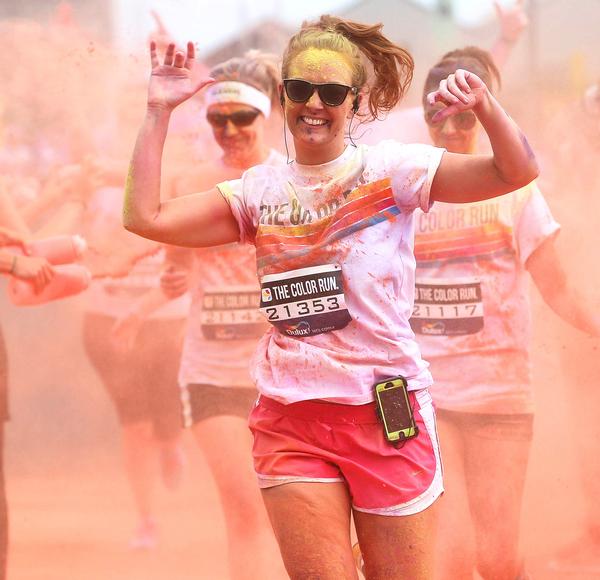

|
| Photo: shutterstock.com |

Experiences such as the Color Run, which can be talked about on social media, are what engages Millennials |
|

|
OPEN RELATIONSHIPS

AN END TO CONTRACTS?

Research by UK trade association ukactive recently found that gyms and health clubs solely offering fixed-term contracts saw an average membership length of 11.2 months, while gyms offering more flexible options alongside fixed contracts saw a 17.2-month average. Far from being an impediment to member retention, it seems flexibility is fast becoming a driver of loyalty.
The younger generations in particular no longer want to belong to just one gym. As The Futures Company points out: “To win with those aged under 30, gym owners must embrace – even encourage – a certain degree of promiscuity of membership.”
It’s important to understand that in the new consumer mindset, customers aren’t being disloyal if they don’t only use your gym; operators need to play to their strengths to ensure they stay in the exercise mix, but at the same time accept that ‘mixing and matching’ is the norm.
The boutique studios have recognised this with their commitment-free ‘pay per class’ set-up, and now other health club operators must follow suit.
| |
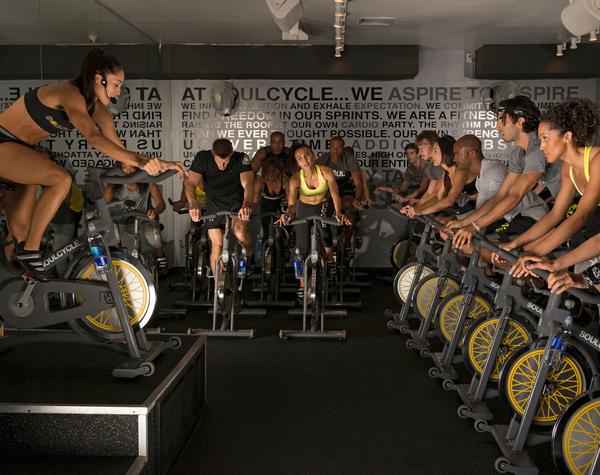

|
| Photo: shutterstock.com |

Boutique studios have led the way with flexible deals – other clubs must now follow |
|

|
IRON LEVELS

HAEMOGLOBIN TESTING

We’re led to believe that iron-rich food is good for your health. However, research shows that too much iron in the system can be toxic and oxidising, and can lead to the development of a range of diseases.
Post-menopausal women are especially vulnerable: as menstruation ends, iron counts can climb to levels that are detrimental to health.
With an ageing population, this presents opportunities for health clubs to offer haemoglobin testing and advice on this important health issue. The solution is simple too: give blood.
| |


|
| Photo: shutterstock.com |

Too much iron in the system can be toxic and lead to disease – but the solution is simple: give blood |
|

|
SOCIAL SCENE

FITNESS NIGHTS OUT

Working out is fast becoming the new, healthy way of going out, with clubs no longer just places to exercise. It’s becoming cool to be fit and well, and to be associated with the right fitness brands.
This trend was kicked off by classes like Zumba: ideally suited to venues like nightclubs, these classes bring groups of friends together for fun as much as fitness.
Now the boutique studios have taken it to a new level, with juice bars to hang out in and retail zones selling branded apparel; exercisers can quite literally wear their allegiance to their workout tribe on their sleeve.
“It’s a badge of honour,” says Barry’s Bootcamp CEO Joey Gonzalez. “People who do Barry’s are so proud of it that they want to wear a branded top, whether in class or at Starbucks, to say to others ‘this is who I am, this is how I work out, I’m a part of this community’.”
But this is a challenge too, as it puts gyms head to head with other leisure options, from cinemas to pubs. The sector has to learn to compete at a whole new level.
| |
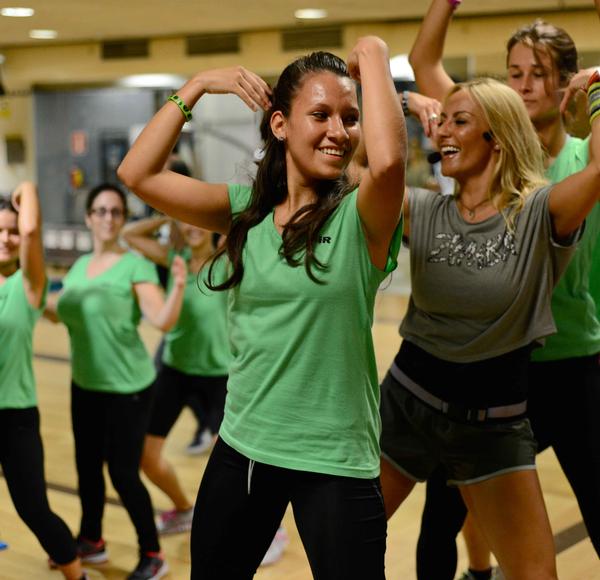

|
| Photo: shutterstock.com |

Working out is becoming the new, healthy way of going out with friends |
|

|
ON A HIGH

THE GROWTH OF TRAMPOLINING

Fitness should be fun. That’s a statement most would agree with in principle, but thus far little has been done to really deliver on it. Now that’s changing with the arrival of the trampolining mega-parks.
Trampolining certainly delivers fitness: NASA research shows that 10 minutes of bouncing on a trampoline is a better cardiovascular workout than 33 minutes of running. It’s also undeniably fun, whether you go for the full-size trampolines, a rebounding class, or a dodgeball game.
As freerunning founder Sébastien Foucan explains, it’s not just about kids either – adults also want fitness to be fun: “People want freedom. They want escapism. They want an activity that’s fun and social and that isn’t going to feel like a chore after work.”
Expect to see a huge boom in this sector in 2016.
| |
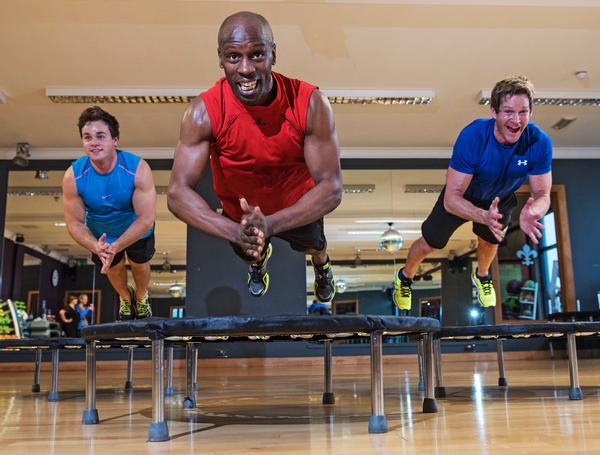

|

Trampolining gives a great CV workout – but just as importantly, it’s great fun |
|

|
THE BIG GET BIGGER

CONSOLIDATION OF THE SECTOR

Mergers & acquisitions will be continue to be the name of the game in 2016 as players across all sectors of the market jostle for position.
2014 and 2015 have already seen rising numbers of deals across Europe – the acquisition of mid-market LA fitness by UK low-cost operator Pure Gym being of particular note in the latter part of 2015, and with a sale of Fitness First likely in the first half of 2016.
But it isn’t just about the private sector operators. In the UK, the biggest changes are likely to come in the trust sector, as more and more small local trusts are swallowed up into the mega-trusts like GLL and Places for People Leisure.
We can expect more consolidation among the suppliers too: we’ve already seen Precor acquire Queenax, Pulse take on Trixter, and Life Fitness develop an ever-growing family of brands. Even where we’re not seeing full acquisition, larger players are taking on distribution of smaller brands: Matrix Fitness and eGym, for example. Expect the climate to get even tougher for smaller, niche supplier businesses.
|

|
RESPECTING YOUR ELDERS

AGE-FRIENDLY DESIGN

Accounting for around 450 million people, Baby Boomers are one of the most influential generations in the world.
In recognition of this, the Silver Group in Asia offers an AF Audit tool that helps companies understand the needs of older consumers. CEO Kim Walker says: “A lot of wellness facilities aren’t age-friendly because they just haven’t given thought to it.”
It’s about subtle changes as well as obvious ones, he adds. If a non-slip floor looks wet, for example, people still change the way they walk and are just as likely to fall. “Also, when you enter a gym, you’re bombarded with instructions that most people would struggle to remember, let alone older adults with cognitive issues. How can you make everything simpler to understand?”
UK-based LiveWire has recognised this: it will open a facility in Q3 2016 that’s not only age-friendly but also dementia-friendly. Alongside appropriate design elements, staff and members of the local community will be trained to understand the condition. It’s developing a number of programmes too: healthy walking classes and tai chi for early onset dementia groups, for example, and a ‘lessen your chances’ programme of activities.
Expect more of this as the world’s population continues to age.
| |
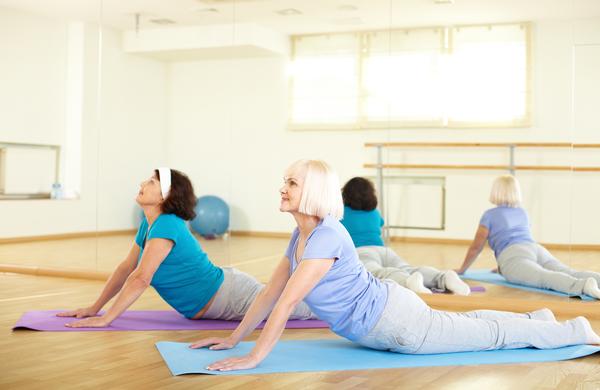

|
| Photo: shutterstock.com |

Is your facility age-friendly – maybe even dementia-friendly – in its design and programming? |
|

|
THE ‘ALWAYS ON’ CONSUMER
AT-HOME FITNESS

AT-HOME FITNESS

As technology continues to create more and more opportunities to work out away from the gym, expect to see a shift in health club operators’ mindset – away from ‘our business is our club’ and towards ‘our business is getting people active’.
The ‘always on’ consumer wants to work out when and where they choose; clubs must recognise this or lose out to apps and online gyms. And with recent Nielsen/Les Mills International research showing that 82 per cent of regular gym exercisers also work out at home, it’s clear that operators can expand their offering without cannibalising their own business.
Virtual at-home classes are one great way of reaching into the homes of members and non-members alike. The technology is already out there – Les Mills On Demand and Wexer Streaming, for example – and now individual operators are getting in on the act.
In Asia, the Pure Group has developed mypureyoga.com – free virtual classes for members and non-members alike – while in Finland, operator EasyFit has created virtual at-home classes for older people: chair-based sessions for those not inclined or not able to attend a gym. In the UK, celebrity personal trainer Matt Roberts has launched Body.Network, which has been dubbed ‘The Netflix of Fitness’.
At present, libraries of pre-recorded classes are the norm. But live streaming could be the next step, letting members remotely join their favourite class when they can’t make it in person – led by their regular instructor and with their gym buddies on-screen.
| |
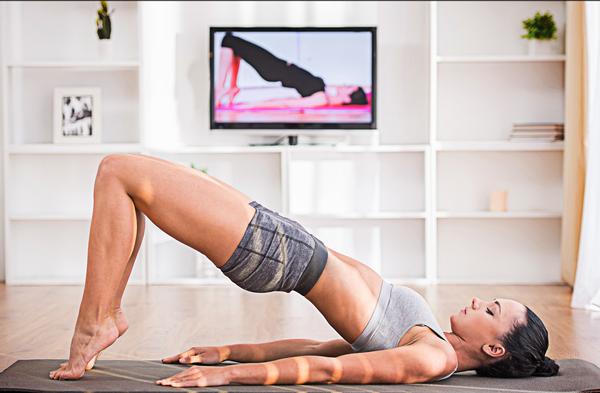

|
| Photo: shutterstock.com |

82 per cent of regular gym exercisers work out at home too |
|

|
FRIEND OR FOE?

THE MIDDLEMAN BACKLASH

Businesses like ClassPass – which sell memberships that allow people to cherry pick classes across any participating studios – hit the headlines in 2015.
For consumers, these businesses tick all the boxes: their delivery of the consumer promises of convenience, flexibility and value is unquestionable.
However, operators are starting to query how good these aggregator services are for their businesses. Pitched as a lead generation tool, in fact many studios are finding that the middlemen’s customers never upgrade to full membership – too tempting are the discounted rates and huge choice of class and venue.
Expect to see a backlash from operators in 2016, with the terms of engagement renegotiated – fewer classes offered to aggregators’ customers, at lower levels of discount, and premium services made available only to regular members.
| |
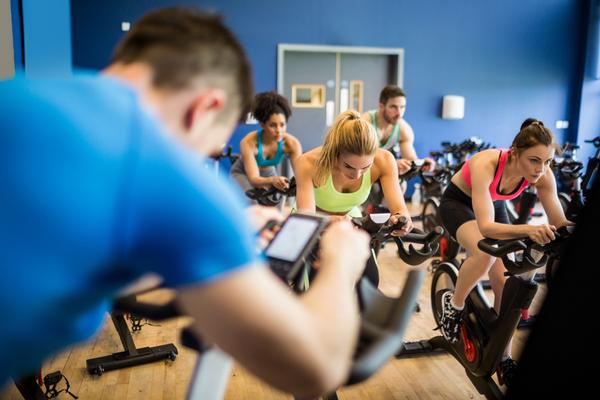

|
| Photo: shutterstock.com |

Will studios begin to limit the number of classes being made available to ClassPass users? |
|

|
WILD AT HEART
ANIMAL MOVEMENT

ANIMAL MOVEMENT

Crawling on all fours, swinging from bars, leaping between obstacles: we’re witnessing a growing trend towards bodyweight movement classes inspired by the animal kingdom.
Early arrivals include Australian workout ZUU – on offer at Virgin Active clubs – and Animal Flow classes at US gym chain Equinox. Other concepts include MovNat – which has a number of affiliated gyms, predominantly in the US but also in the UK, Canada, Australia, New Zealand and various European markets – and Primal Move, with numerous trained instructors around the world.
All of the classes deliver a full-body functional workout. Crucially, they’re also great fun, helping participants to rediscover the joy of movement.
We can expect a lot more innovation to come from this category.
| |


|

Animal Flow classes – based on bodyweight exercises – are available at US gym chain Equinox |
|
Kate Cracknell is editor of Health Club Management magazine and the Health Club Management Handbook. She previously worked as global account director for advertising agency J Walter Thompson, based in the London office.
E: [email protected]
T: @HealthClubKate
Liz Terry has been writing about and analysing the global leisure industries since 1983. She’s managing director of Leisure Media, which includes Health Club Management in its portfolio of leisure-focused magazines.
E: [email protected]
T: @elizterry
|
|
 |
| Originally published in Health Club Handbook 2016 edition
|
|
 |
|
|
| | | | | | | | | | | | | | | |
